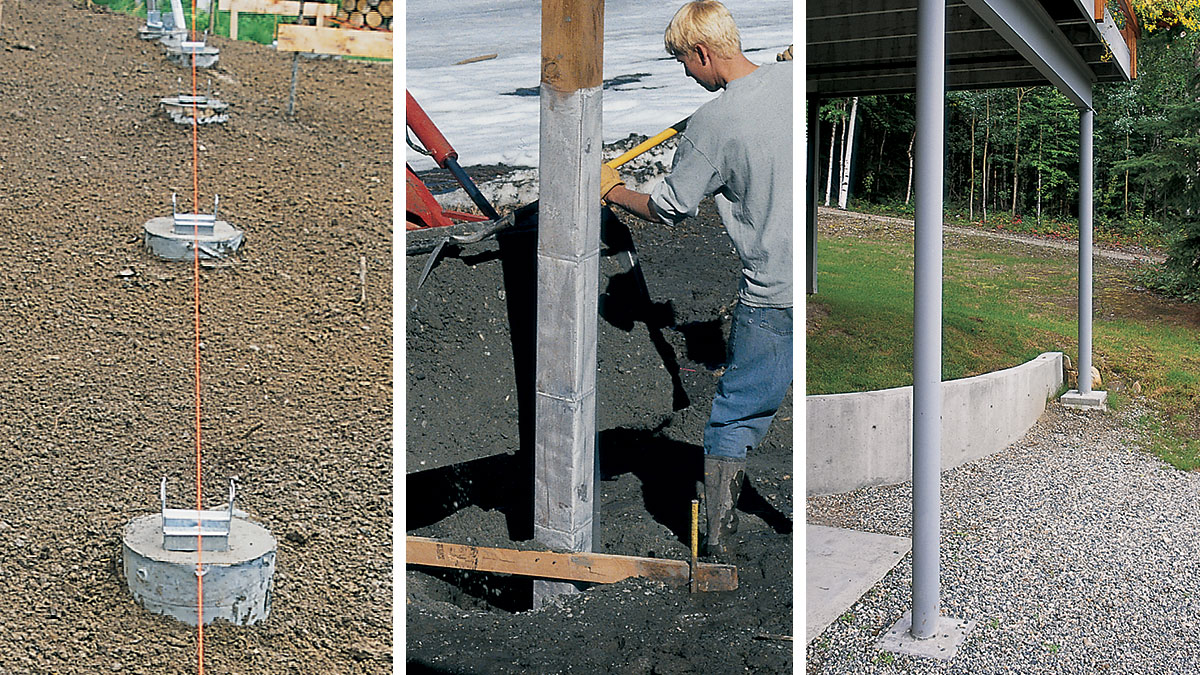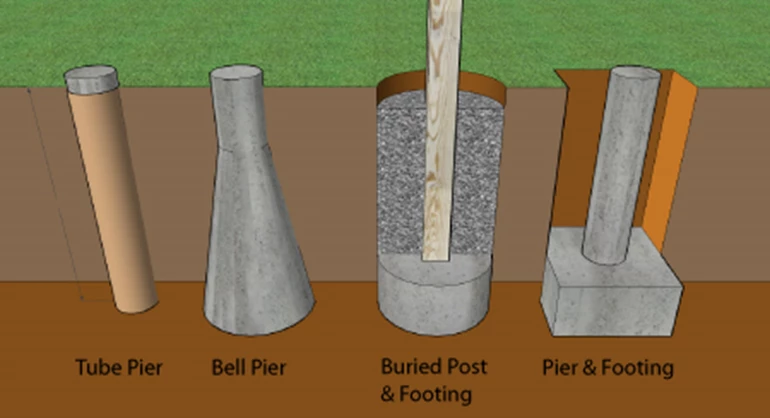Grasping the Art of Deck Footings: Crucial Strategies for Long-lasting Decks
Essential Tips for Solid Deck Footing: A Comprehensive Guide
Welcome to "Important Tips for Solid Deck Ground: A Comprehensive Guide." In this thorough guide, we will certainly provide you with the important expertise and strategies to make sure a stable and solid foundation for your deck. Developing a deck is an investment that calls for careful preparation and focus to information, specifically when it comes to the ground. This overview will cover important elements such as picking the ideal products, evaluating soil conditions, computing load capacity, figuring out proper ground depth, and attaining exact installation. By adhering to these tips, you will be geared up with the required details to build a deck that not only boosts your exterior room yet additionally stands the test of time. Allow's dive right into the world of strong deck ground and develop a foundation you can depend on.
Picking the Right Deck Ground Materials
When selecting the ideal deck footing products, it is necessary to consider the certain needs and demands of your task. The top quality and resilience of the footings straight impact the security and longevity of the deck framework. When choosing deck ground materials., there are several elements to consider.
Clay soils have a tendency to maintain water, while sandy soils drain pipes rapidly. Understanding your soil problems will assist you choose grounds that can efficiently support the weight of the deck and prevent issues such as heaving or sinking - Deck Footings.
Another factor to consider is the climate in your region. Severe temperatures, dampness levels, and freeze-thaw cycles can influence the efficiency of deck footings. In chilly environments, for example, frost heave can cause footings to split or shift. In such cases, making use of frost-resistant products or mounting grounds listed below the frost line can assist minimize these dangers.
Additionally, the size and style of your deck ought to also affect your selection of footing materials. Larger or even more complex decks may need deeper or enhanced footings to make sure sufficient support. Comprehending the certain lots demands of your deck will help you identify the appropriate products to utilize.
Inevitably, picking the right deck ground materials involves cautious consideration of elements such as soil problems, climate, and deck layout. By taking these elements right into account, you can pick footings that offer the essential assistance, improve the stability of your deck, and guarantee its long life.
Appropriately Evaluating Dirt Conditions
To appropriately evaluate dirt conditions for your deck footing, it is vital to thoroughly assess the load-bearing capabilities and drain properties of the soil in your location. Recognizing the dirt's capacity to bear weight and its ability to drain excess water will assist make certain the security and longevity of your deck.
When evaluating the load-bearing capability of the dirt, it is necessary to take into consideration factors such as dirt compaction, density, and type. Various dirt types have differing load-bearing capacities, with compacted soils typically offering better support than sandy or loosened dirts. Conducting a dirt examination can provide useful details about the soil's capacity to sustain the weight of your deck.
In addition, assessing the drain properties of the dirt is essential to stop water build-up and possible damage to your deck - Deck Footings. Poor drainage can cause moisture accumulation, which can deteriorate the structure and trigger structural concerns. It is essential to analyze the dirt's capability to drain pipes water efficiently to stay clear of these issues
Consulting with an expert designer or dirt expert can considerably help in appropriately evaluating soil conditions for your deck ground. They can give expert suggestions and support, ensuring that you choose the suitable footing layout and products based upon the certain features of the dirt in your area. Putting in the time to completely assess soil problems will certainly help you develop a strong and long lasting deck.
Determining Tons Capability for Grounds
One crucial action in making certain the stability of your deck is to properly compute the tons capability for your footings. Deck Footings. The load ability refers to the optimum amount of weight or lots that the footings can safely sustain without triggering any structural damage or failing. Computing the load capability for footings entails thinking about different factors such as the size and kind of footings, the sort of soil, the measurements and weight of the deck, and the live lots and dead lots that the deck will undergo
To compute the tons capacity, it is necessary to seek advice from regional building regulations and regulations as they offer particular guidelines and demands for deck building. These codes consider factors such as soil bearing capability, frost depth, and minimal ground measurements. Additionally, it is vital to engage the services of a professional contractor or a structural designer who can carry out the essential computations and analyses to make sure the safety and security and stability of the deck.
When computing the load ability, it is necessary to precisely figure out the online tons and dead load that the deck will certainly experience. The real-time load describes the weight of people, furnishings, and any various other products that will be put on the deck, while the dead lots refers to the weight of the deck itself. By precisely determining these loads and considering all pertinent elements, you can make certain that your footings are effectively made to support the weight and maintain the security of your deck.
Making Certain Proper Footing Deepness
Proper ground deepness is essential for ensuring the security and durability of your deck. The deepness at which the footings are mounted straight impacts the architectural honesty visit the site of the deck, as it identifies exactly how well the grounds can resist the forces put in by the deck and the dirt below it.
When identifying the proper footing deepness, numerous variables need to be thought about. These include the kind of dirt, the neighborhood climate, and the tons ability required for the deck. Usually, footings ought to be placed listed below the frost line to stop any kind of heaving or shifting because of freezing and thawing cycles. In locations with expansive clay dirt, deeper footings may be necessary to offer ample support.
To figure out the proper footing deepness, it is recommended to talk to an architectural designer or building assessor that can assess the certain problems of your site and provide guidance based upon regional building regulations and guidelines. They will certainly take into consideration factors such as dirt make-up, aquifer degree, and expected loads to identify the minimum needed footing deepness.
Installing Footings With Accuracy
Mounting footings with precision is important for making certain the stability and structural stability of your deck. Effectively installed footings offer a strong structure, guaranteeing that your deck can endure the weight of furniture, people, and various other loads. To install grounds with precision, there are several vital actions to adhere to.
To start with, it is crucial to properly note the area of each ground. This can be done by utilizing a string or chalk line to create a clear rundown. By determining and noting the exact settings, you can guarantee that the grounds are evenly spaced and straightened.
Following, you need to dig the openings for the grounds. It is critical to dig them to the right depth and diameter, as defined by regional building ordinance and policies. This will give sufficient assistance and stop the deck from sinking or changing gradually.
As soon as the openings are dug, it is very important to degree and portable the dirt at the end of each opening. This will produce a stable base for the ground to rest on and prevent any kind of settling or motion.
After preparing the holes, you can wage pouring the concrete. Utilize a concrete mix that is appropriate for grounds and comply with the maker's instructions for mixing and putting. Guarantee that the concrete fills the openings completely and is degree with the ground surface area.
Lastly, allow the concrete to cure appropriately prior to waging the building and construction of your deck. This will certainly make sure that the grounds are secure and strong, supplying a safe foundation for your deck.

Conclusion
Finally, making certain solid deck ground is vital for the security and durability of a deck framework. By picking the appropriate ground materials, evaluating soil conditions, calculating lots capability, and setting up footings with precision, the danger of architectural failure can be lessened. Complying with these essential suggestions will aid produce a solid foundation for any deck job.
Comprehending your soil conditions will certainly help you choose grounds that can effectively sustain the weight of the deck and prevent issues such as sinking or heaving.
Consulting with a specialist designer or soil specialist can significantly assist in appropriately examining soil problems for your deck ground. Determining the lots capability for footings includes taking into consideration different variables such as the size and type of grounds, the type of dirt, the measurements and weight of the deck, and the online lots and dead load that the deck will certainly be subjected to.
